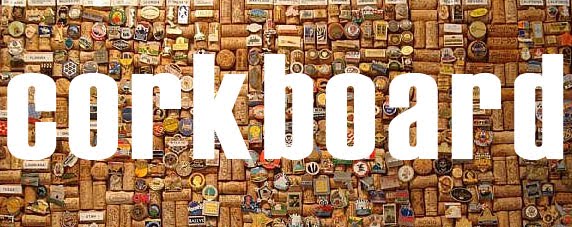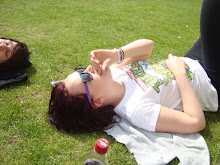In the tutorial this week it was determine that in order to successfully understand where to go next with this project it may prove helpful to go back to the initial questions on the brief and analyse whether or not I think I've covered everything. So here goes!
As a visual communicator, what is your relationship to technology?
With regards to the printmaking work that I've explored, I've found that my relationship has been extremely hands-on and intense. As opposed to a lot of contemporary digital design work which can often be quite distant, the fact that I've physically had to carve out the lino pieces or painstakingly etch an image into perspex using a stanley knife has caused me to constantly scrutinize my work as I'm going along. You get attached to it because it's a physical representation of your work - not something you cary round on a memory stick.
I don't think I'm really answering this question, this just sounds like waffle.
My relationship to technology. I use it. More importantly, I now understand it. If I ever need a leaflet printed professionally I can design it more efficiently because I understand the printing process now. I'm not passively designing; I'm making active choices. If that makes sense? With traditional print, I understand it's history and it's progression. I know the benefits of woodcut printing because I look at what it was used for initially and because I've tried these things out I can make an informed decision as to the techniques I use in the future.
Think about what technology, media, equipment and software you are likely to use as a practitioner. How do you go about learning it?
I wanted to learn printmaking. I attended print drop in both at Blenheim Walk and Vernon St and tried my hand at everything I could. I had conversations with the print technicians, formed working relationships with them, asked questions and generally absorbed their knowledge, by doing this I've learnt more efficiently than going it alone and I've made it much easier for myself to get help with print work in the future.
I learned how to make my own handmade paper to print on. I organised a small workshop for a group of us that were interested with the ceramics technician who was more than happy to show us.
I attended preparation for print software workshop and in turn learnt how to print colour separations off really easily. I was also introduced to spot and Pantone colours which in turn led me to visit Duffield Printers. Although my project was not primarily concerned with digital printmaking I learnt so much from that visit that I'll be able to apply at some point in my career as I will inevitably need something printed!
I attended group tutorials with Nick and Sophie/Christian and the other students interested in printmaking where we shared experiences and offered advice and criticism. Bouncing ideas around in a group genuinely helps you to develop a better understanding of where you're going and can help you refocus when you may feel lost.
More broadly I've been able to define the techniques that I enjoy and those that I don't. I know the effects generated by each print technique. I know what's involved with the preparation of each method - e.g. timescales and health and safety; something which is very important to consider. For instance preparing a screen in Blenheim takes much longer than Vernon St, and because of the heavy use of chemicals there is allotted times each day to strip screens and also to expose them. I know how much things cost now, I've been constantly forking out, whether it be for screen prep, flocking paper, fabrics, inks, perspex - everything costs money! These things are all relatively cheap but because this project is based on experimentation I've just been having to pay for one thing after another after another and it all adds up!
So that's what I've learnt. Which begs the question what do I now need to learn?
I think I've pretty much exhausted printmaking for now. So I need to focus on ways in which I can apply my new skills. I want to become competent on Illustrator (something which still scares me at present) so that I can develop artwork to be printed and also be able to scan prints in and incorporate them into more contemporary pieces. Right about now I really wish I had attended the Illustrator workshop at the beginning of the term. Having said that though, I personally find it difficult to absorb information in that kind of teaching environment. I benefit better sometimes from trying to teach myself through online tutorials, that way I can instantly orientate my learning around myself and my own work, then if I have any problems I can get additional help from the technicians.
I need to find out how to print images larger than A3. If I ever need to screen print an image A2 or above I'll have to have the positives printed out before I can prepare the screen. How much does it cost to print large sizes? What are the drop in times for the digital print room? What formatting do I need? etc.
I want to learn how to win a competition. Sounds pretty obvious, but so far on this course a lot of the work has been really conceptual and not a lot of good old fashion designing has gone on. I want to enter competitions this year and I want to know how to respond to the briefs in a way that will get me noticed. Obviously I know it relies mainly on individual talent, but the systematical thinking behind it can be taught. Christian mentioned a workshop for anyone interested in competition briefs and I would definitely benefit from it.
What creative opportunities and limitations do these technologies hold?
With regards to limitations, each individual printing method has its own set of advantages/disadvantages over the others depending on the outcome you require. For instance, size and time are two of the main factors for most of them - it would be extremely time consuming and laborious to produce a drypoint any bigger than say A4/A3 depending on the detail in the image; inking it up and buffing it would be a nightmare and you need to take into consideration the fact that you need to print on paper the next size up - would an A2 sheet of paper fit through the rolling press? And with monoprint for example you are limited by the fact that no two prints will ever be the same - so if you produce a print you love, how do you reproduce that image?
Foiling and flocking proved to be the most expensive techniques, so I'm limited by money as to how I apply those skills in the future. There's also different time limitations in both of the print rooms, i.e. drop-in times.
The creative opportunities presented by printmaking are endless - the same with any creative practice - the technology is there for printmakers to do whatever they choose with their artwork, whether it be exhibiting, manipulating, or even further development through print. Artists can collaborate on print projects; use print as a focus for community groups; apply it to greetings cards, wallpaper, posters, websites, anything they put their mind to. The only limitation these days is the imagination of the individual.
How do broader developments in technology affect your future as a visual communicator, as a citizen and for society as a whole?
I have learned that broader developments in technology is a hard topic to relate to traditional printing. It's called traditional for a reason - it is, technologically speaking, an old practice! As I've said in previous posts, most of the techniques I've been trying have developed in such a way that they have reached their most efficient system of production. You can't make them more efficient without removing some of the human interaction aspects of it, which begs the question - when you start to substitute machinery for manual labour, can you still call it traditional print? For instance, lino prints that have been carved by a laser cutter? The print will be pristine but is it still a handcrafted print?
As a visual communicator I don't think my relation to traditional print is likely to change much. Progression in digital printing is inevitable and will undoubtedly become faster and more eficient in the future but I seriously doubt that the same will happen to traditional print. The real changes will be in how we apply ourselves to it. As has happened with so many things in the past, traditional print will see a surge of popularity in the form of a sort of designers rebellion against the crisp, clean lines of all this technology we're being bombarded with - but design is essentially a cycle of ideas, it has seasons just as fashion does and it is these phases of revisiting old techniques that keep traditional methods alive.


No comments:
Post a Comment